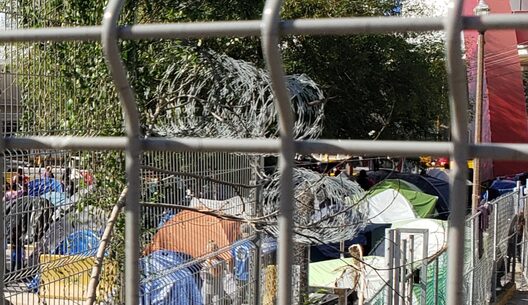By request, I'm sharing the transcript of a speech I made in front of Dallas City Hall last summer, when the United States government began to openly steal children from their parents. Many of those families remain apart, and private accounts speak of continued separations. I find it important to share these words again. Please note the links to research. The harm is real. And so is the hope.
Jenifer Wolf Williams, Ed.D., LPC-S
I’m a trauma therapist with a focus on immigration trauma, and most of the time I work with adults. But not that day.
That day, a little girl sat in my counseling office in a chair that was far too big for her, and mostly, she was silent. Slowly, she answered my questions in whispered monosyllables, and what I remember most are her eyes.
At first, I couldn’t see them at all. She kept them glued to the floor. But once I earned enough trust, she looked up at me with brilliant, dark eyes—pooled with more tears than I had ever seen eyes hold.
At last, she let them spill, and with them her grief. She didn’t know where her father was. Just somewhere in ICE detention. Somewhere she could not find or reach.
There. Is. No. Question.
Separating families causes longterm psychological and physical harm. Decades of research link separations to Adverse Childhood Events (ACE’s), and Adverse Childhood Events have been linked to impaired neurodevelopment in children. Impaired neurodevelopment that causes longterm cognitive, emotional, and social impairment.
And this type of adverse childhood event is so stressful it is called Toxic Stress. Toxic Stress has been linked by decades of research to lifelong risk of depression, lifelong risk of PTSD, and lifelong risk of physical impairments like cancer, diabetes, heart disease, and stroke.
A trauma study among refugee families found that of the twenty-six trauma types they reported two made the strongest negative impact on wellbeing. The two traumas that tied for most harmful were physical torture and family separation.
The poet Warsan Shire tells us that no one leaves home unless home is the mouth of a shark.
And the little girl in my office that day fled home because gang members tormented her father, pressed him for money he didn’t have, and when he couldn’t provide what they wanted, they entered her school and held her sibling at gunpoint.
Her parents did what any parent would do – they fled. But when they reached the U.S. border, what we gave them in response was trauma upon trauma.
Family separation harms adults too. I have seen this harm many times, but one woman stands out in my memory. She was almost as quiet as that little girl. She crumpled to a fetal position, and when she spoke, she spoke of suicide.
Suicide is not just a risk, it’s already real. You may have heard of the Honduran father who committed suicide in ICE detention just this week when his son was ripped from him. We are no longer at risk. We are in the throes of damage.
So this brings another question. Just a few days ago, a friend of mine of mine asked, “How could they?” And this is a good question because it’s not that our leaders don’t know they’re causing harm. In fact, if you look at the CDC website, a U.S. government website, it tells us that adverse childhood events are preventable and we all need to work to prevent them. This information is certainly available to the Department of Justice.
The only way someone could commit this kind of harmful act on another human being is through another process that social psychologists have studied for a long time. It is a process of dehumanization that is accomplished through moral shift.
Moral shift happens when we begin to redefine who deserves our moral treatment. All faiths share the mandate to treat the vulnerable with kindness and protection. All of us share the values of love, kindness, compassion, honesty, and courage. But in moral shift, we begin to think there are contexts in which it’s okay not to follow our moral values. This is called moral disengagement. We disengage from our own shared values.
The second level of moral shift is victim exclusion. Victim exclusion says, “That group doesn’t deserve to be treated the same way as the rest of us.” Historically disenfranchised groups are the most vulnerable targets of exclusion. If our forefathers devalued a people group, we are at high risk for doing the same.
The third and worst level of moral shift is moral reversal. Moral reversal says, “It is a virtue to harm that group because they are a threat to me.” What we see today as our leaders perpetrate cruelty on families and children at the border is moral reversal. It is a cruelty based on the idea that hurting asylum seekers is virtuous.
But the good news is, there is one more level. And that level is moral recovery. Moral recovery is a long and complicated process. It takes courage, patience, and hard work. I won’t list all the steps right now, but I’m going to mention two.
The first is deep connection. Deep connection begins with coming together as people from different groups, different backgrounds, to find we who are as a whole. We commit the time and find the courage to begin. We learn from each other, and through time and hard work, we identify our shared goals. We connect ourselves and our resources to reach those goals in ways that none of us could do alone.
A second step toward moral recovery is active bystandership. We see what is wrong, and we refuse to pretend we didn’t see it. The typical human reaction is to turn away. To speak—to acknowledge injustice—takes courage. It takes will. But our acts of courage and will carry us toward healing. They carry us toward connection. And they carry us toward peace.
